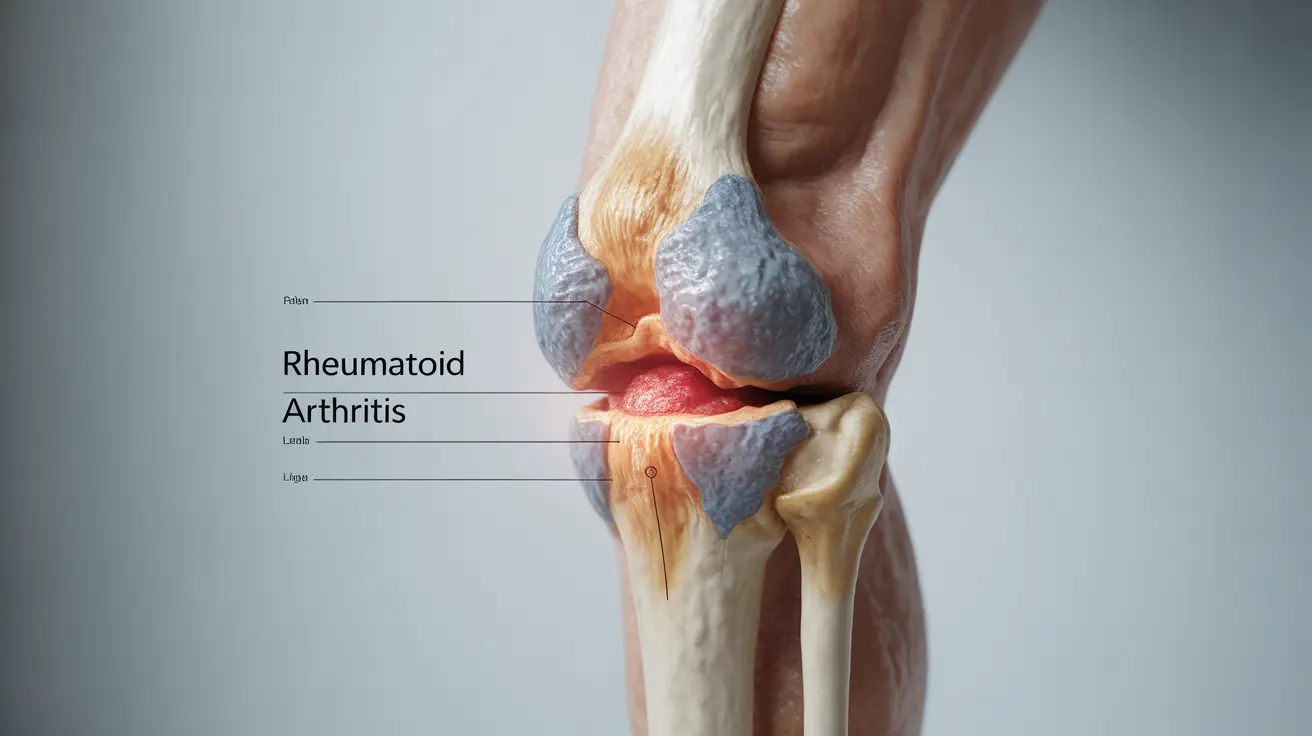Elderly onset rheumatoid arthritis (EORA) is a specific form of rheumatoid arthritis that develops in adults over the age of 60. This condition presents unique challenges and characteristics that distinguish it from rheumatoid arthritis developing earlier in life. Understanding these differences is crucial for proper diagnosis and effective treatment strategies.
While sharing some similarities with traditional rheumatoid arthritis, EORA often requires special consideration due to the presence of other age-related health conditions and the body's changing response to medications in later years. This comprehensive guide explores the key aspects of elderly onset rheumatoid arthritis to help patients and caregivers better understand and manage this condition.
Key Symptoms and Characteristics of EORA
Elderly onset rheumatoid arthritis often presents with distinct symptoms that may differ from younger-onset RA. The most common signs include:
- Sudden onset of joint pain and stiffness
- More frequent involvement of larger joints
- Significant shoulder involvement
- Morning stiffness lasting more than an hour
- Reduced hand grip strength
- General fatigue and malaise
Unlike younger-onset RA, EORA may develop more abruptly and can affect larger joints before smaller ones. This pattern can sometimes lead to initial misdiagnosis, making it crucial to seek proper medical evaluation.
Diagnostic Challenges and Approaches
Diagnosing elderly onset rheumatoid arthritis requires careful consideration of various factors, as symptoms can overlap with other age-related conditions. Healthcare providers typically employ a combination of methods:
- Physical examination
- Blood tests for inflammatory markers
- Imaging studies (X-rays, MRI)
- Assessment of symptoms duration and pattern
- Evaluation of other existing health conditions
Special attention must be given to distinguishing EORA from conditions like osteoarthritis, polymyalgia rheumatica, and other inflammatory conditions common in older adults.
Treatment Strategies and Management
Managing elderly onset rheumatoid arthritis requires a balanced approach that considers both effectiveness and safety. Treatment options typically include:
Medication Options
- Disease-modifying antirheumatic drugs (DMARDs)
- Nonsteroidal anti-inflammatory drugs (NSAIDs)
- Low-dose corticosteroids
- Biological agents in selected cases
Non-Pharmacological Approaches
- Physical therapy and exercise programs
- Occupational therapy
- Joint protection techniques
- Assistive devices when needed
Treatment plans must be carefully tailored to account for other health conditions and potential drug interactions common in older adults.
Special Considerations for Older Adults
Managing EORA in older adults presents unique challenges that require special attention:
- Higher risk of medication side effects
- Presence of multiple health conditions
- Potential drug interactions
- Reduced kidney and liver function
- Need for more frequent monitoring
- Balance between effectiveness and safety
Frequently Asked Questions
What are the main symptoms that indicate elderly onset rheumatoid arthritis?
The main symptoms include sudden onset of joint pain and stiffness, particularly in larger joints, morning stiffness lasting over an hour, reduced hand grip strength, and general fatigue. Unlike younger-onset RA, EORA often develops more abruptly and may initially affect larger joints rather than smaller ones.
How is elderly onset rheumatoid arthritis diagnosed differently from other joint diseases in older adults?
Diagnosis involves a comprehensive approach including physical examination, blood tests for inflammatory markers, imaging studies, and careful evaluation of symptom patterns. Special attention is paid to distinguishing EORA from other age-related conditions like osteoarthritis and polymyalgia rheumatica.
What treatment options are available for managing elderly onset rheumatoid arthritis?
Treatment options include medications such as DMARDs, NSAIDs, and corticosteroids, along with non-pharmacological approaches like physical therapy, occupational therapy, and assistive devices. Treatment plans are carefully tailored to account for other health conditions and potential drug interactions.
How does elderly onset rheumatoid arthritis differ from younger-onset rheumatoid arthritis in terms of joint involvement and disease progression?
EORA typically shows more frequent involvement of larger joints, particularly the shoulders, and may progress more rapidly than younger-onset RA. The pattern of joint involvement often differs, with larger joints affected before smaller ones, contrary to typical RA progression.
What are the risks and challenges of taking medications for elderly onset rheumatoid arthritis in older adults with other health conditions?
Key challenges include increased risk of medication side effects, potential drug interactions with treatments for other conditions, reduced kidney and liver function affecting drug metabolism, and the need for more frequent monitoring. These factors require careful medication selection and dosing adjustments.




